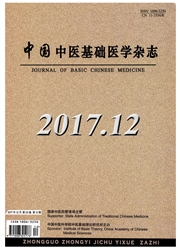

 中文摘要:
中文摘要:
大量的临床实践证实了“心胸内关谋”这一经典论述,研究内关穴治疗心脏疾病的作用机制有利于揭示经穴脏腑相关特异性的机理。近年来,针刺内关穴抗心肌缺血作用机制的研究颇多,除了传统的心电图、病理学组织切片、B超外,还采用分子生物学技术、膜片钳技术、脑功能成像以及PET成像等技术来探讨针刺对脑的经典神经递质、神经激素、神经元代谢等影响,从器官、系统到细胞、受体、细胞核、基因、蛋白质分子等不同的层次上,为针刺抗心肌缺血的中枢神经调节机制提供大量的实验基础,故针对近年来针刺内关穴抗心肌缺血的中枢神经调节作用研究进展加以讨论。
 英文摘要:
英文摘要:
A large number of clinical practice confirmed the classical arguments that "for heart and chest, it is point Neiguan". It is helpful to reveal the mechanism of the correlation between acupoints and internal organs while studying the curative effect of Neiguan on the treatment of heart disease. In recent years, many research of Neiguan against myocardial ischemia focused on the traditional electrocardiogram, pathology biopsy, B ultrasound, and also adopted the molecular biology technology, patch clamp technique, brain imaging and PET imaging technology to investigate acupuncture effect on the classic neurotransmitters of the brain, neural hormone, and neuron metabolism, etc. It has provided a wide range of experimental basis from the organs and systems, to cells, receptor, cell nucleus, gene, protein molecules, and so on into different level. This article in view of the acupuncture against myocardial ischemia on central nervous regulation in recent years.
 同期刊论文项目
同期刊论文项目
 同项目期刊论文
同项目期刊论文
 期刊信息
期刊信息
